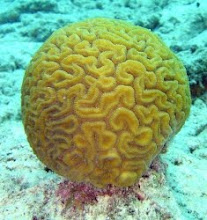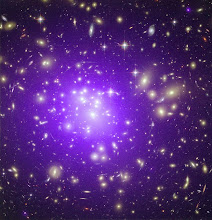Nebuchadnezzar's society, the Chaldeans of Babylon, distinguished two important kinds of living beings: Aurochs and Dragons. They were portrayed in the famous Ishtar Gate.
Aurochs were a kind of very large wild cattle that survived until 1627. Dragons were lizards that walked on four legs, unlike lizards which crawl, dragging their bellies on the ground. Both of these are well known in many different cultures.
One difference between Aurochs and Dragons was that Aurochs were warm-blooded creatures, which are mammals, hence homoiothermous. Aurochs are descended from mammals, which emerged in a distinct evolutionary break from dinosaurs around 65 million years ago. Dogs and cats are also warm-blooded mammals.
Lizards are cold-blooded, or more accurately, ambient-blooded creatures called poikiothermous. They include reptiles like crocodiles and alligators as well as komodo dragons, small lizards, turtles and snakes. They never diverged from dinosaurs; they are simply the vestiges of dinosaurs.
After the distinction between Dragons and Aurochs became clear, as in the Ishtar Gate, six hundred years passed and it appears likely that the distinction was one part of what gave Rome its distinct and powerful character. It was an important discovery to find that human beings are warm-blooded creatures and that warm blooded creatures are very distinct from reptiles. Evidence of that power is in some of the events in Rome that involved fire.
In 46 BC the Roman Emperor Julius Caesar introduced a new calendar, based on a 365 day year, with a leap year added to February to compensate for the fact that the year is not exactly 365 days, but within a few minutes of 365.25 days. That calendar is the primary basis for the modern civil calendar, used throughout the world. The extra few minutes would not be accounted for in the period of time discussed here.
That six hundred years between Nebuchadnezzar and Julius Caesar is important. The number six registers in evolutionary time with the atomic number of carbon, essential and fundamental to all life on Earth. The atomic number is the number of positive charges, or protons, in the carbon atom nucleus. The protons are far heavier than electrons, approximately 1732 times as heavy. Electrons are far more mobile than protons, and many events occur in which the difference of these charges appear as differences in potential between objects, entities, and beings. They also become differentiated in trade, including both barter and money.
Thus, six hundred years after mammals were distinguished from dragons, something about that difference began to appear in charges throughout the Mediterranean, Middle East and Southern Asia. It would remain unresolved for another six hundred years, when twelve hundred years would have passed after the distinction between mammals and reptiles was made.
If by the time twelve hundred years passed after human beings began cutting the dinosaurs from the mammals, Rome had not attained a means to balance both masses and charges in civil trade, there would be hell to pay. T. Rex's legacy, "only" consisting of Nile Crocodiles, various poisonous and non-poisonous frogs, lizards and snakes, and turtles, would all be down on H. Sapiens with blood in its eye. Never mind humans were the boss and had weapons and tools. The reptiles were losing and they knew it, but they would cause trouble where they could.
That is why, six hundred years after the Roman calendar began, and twelve hundred years after that distinction was made between cold blooded and warm blooded beings, a spiritual wave devolved to become the Koran. The power of the universe was interpreted by tribal leaders then. The twelve is the atomic mass of carbon, and intrinsic nature of its charge means that twelve is a time of complete accounting of both mass and charge.
The important thing is that a power struggle between reptiles and mammals continued to exist at that time. Disappearance of the dinosaurs spans many millions of years, and is not completed yet. Though crocodiles are officially protected, they are fiercely hunted by poachers. Peculiarly, in some places attempt are being made to raise gigantic crocodiles and alligators. One Florida alligator was photographed banging on the side of house with a car bumper held between its teeth, as if it wanted in, trying to get a piece of the human action. In evolution, competition is electric and crosses every difference. Massive evolutionary contest involved great gravity between dinosaurs and mammals during aeons of time. It still exists now in the reptilian competition against human beings as a nuance of their carnivorous predation.
If so, the GRACE satellites mapping Earth's gravity are a good place to start. No Klingons.
Now, it is known that same sweep and range of power extends from the remote galaxies also, to the Earth and the infinitesimal, delicate nature of its tiniest creatures, with mankind in the middle. If what the United States and other countries we are doing now is good, then twelve hundred years from now the United States, and to be sure those other countries, will be judged in the atomic weight of carbon and remembered as good nations.
It may be sufficient to consider the long term divergence between mammals and reptiles and the implications of that divergence on interest, monetary systems, the Earth, social dignity, justice and other life factors. That is a field for better economists than the author. The United Nations Millennium Goals are carefully thought out, and while nobody can see a thousand years hence clearly, those stand a chance of being at least right. In any case, elemental atomic charge (number) and weight are significant in competition in the evolution of both life and civilization.
The period constituted the first half
of a set of phenomena which contained both even and odd parity factors.
It did not, though, resolve the massive gravitational distribution
of ancient life. That would not happen until the atomic weight
was considered in relation to that which had inceived the concepts.
Not until roughly 600 AD, twelve centuries past Nebuchadnezzar, did
it sink home that something important was cleaving reptiles from
mammals and that this something was being resolved in charges.
Subscribe to:
Post Comments (Atom)







No comments:
Post a Comment